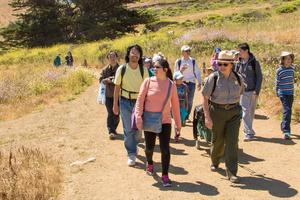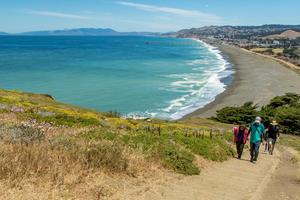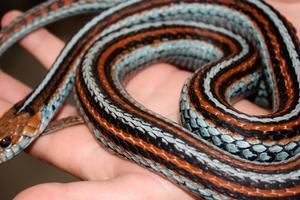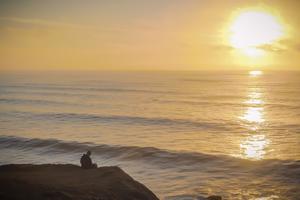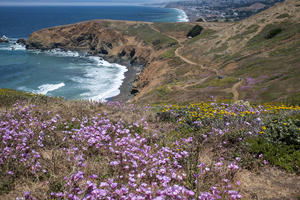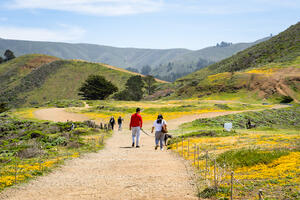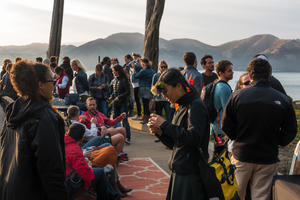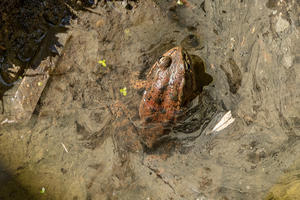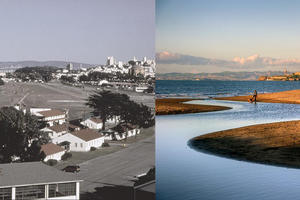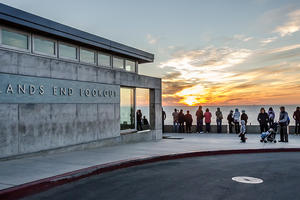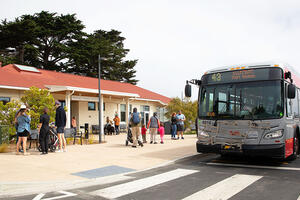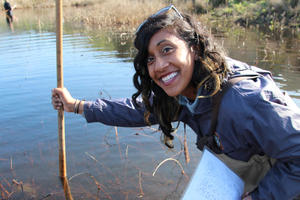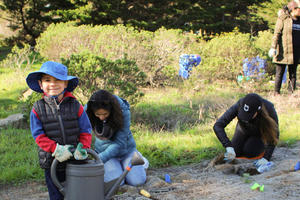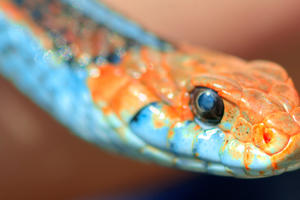
See what wonders restoration work creates at this rugged coastal promontory in San Mateo County.
Thanks to community volunteers, the 110-acre park now has trails, red-legged frog ponds, and a revived habitat for the San Francisco garter snake, once North America’s most endangered reptile.
Plan Your Visit
click Icon to show on map
- The terrain here is varied; walks around Mori Point range from a level and easy 0.5-mile stroll to a steep and challenging 1.5-mile hike.
- Beautiful wildflower blooms are at their peak in the springtime, with the most flowers usually present in April and May.
- Parking is available on Mori Point Road or Bradford Way.
- Walk to the tip of the promontory for stunning views; it’s quite windy on the bluffs so dress accordingly.
- Stroll down to Laguna Salada and listen for the croaking of the red-legged frog.
- Walk barefoot on the black sands of Sharp Park Beach.
- During WWII, workers used a pulley system of long cables attached to cement anchors to pull buckets of sand ashore. Several of these crumbling blocks remain on the western hillside.
Restoration activities have helped the area recover from invasive species infestation and centuries of use by humans. In the 1700s, the Spanish mined a nearby limestone quarry to supply whitewash for San Francisco’s Presidio buildings. An Italian immigrant, Stefano Mori, purchased 19 acres of farmland here in 1888. Mori built a guesthouse/restaurant, the Mori Point Inn, which developed a notorious reputation during the Prohibition days and was operated by the family until the 1940s.
Mori Point was a site of gravel and sand extraction during World War II; quarrying and later off-road vehicle use left the landscape scarred. In 2000, with the help of the Pacifica Land Trust, the Coastal Conservancy, and concerned community members, Mori Point was purchased by the Trust for Public Land and added to the Golden Gate National Parks.
Mori Point, a stunning coastal park in San Mateo County, had a colorful history as the former site of a limestone quarry, bootlegging operations, a rowdy roadhouse, and dirt-bike racing. By the time the site was acquired by the National Park Service in 2004, a large network of informal trails had caused erosion, changes to the natural flow of water, and an influx of invasive plant species.
In 2007, the Parks Conservancy and National Park Service launched a major restoration effort to repair this damage, restore habitat, and improve the visitor experience. With the help of community volunteers, 33 acres of wetland, grassland, and coastal scrub habitat were restored—including habitat for the endangered San Francisco garter snake and the threatened California red-legged frog. To support and enhance visitor access while protecting the sensitive ecosystem, new trails and boardwalks were constructed, and new directional and interpretive signage was installed.
Today, visitors to Mori Point can enjoy a sustainable network of trails varying in difficulty, sweeping seaside panoramas, wildlife viewing, and abundant spring wildflower displays. Learn more about restoration and stewardships at Mori Point here and how you can be part of the team of community volunteers who pitch in every week to help continue to care for and restore this special place.
Learn more about restoration and stewardships at Mori Point here and how you can be part of the team of community volunteers who pitch in every week to help continue to care for and restore this special place.
